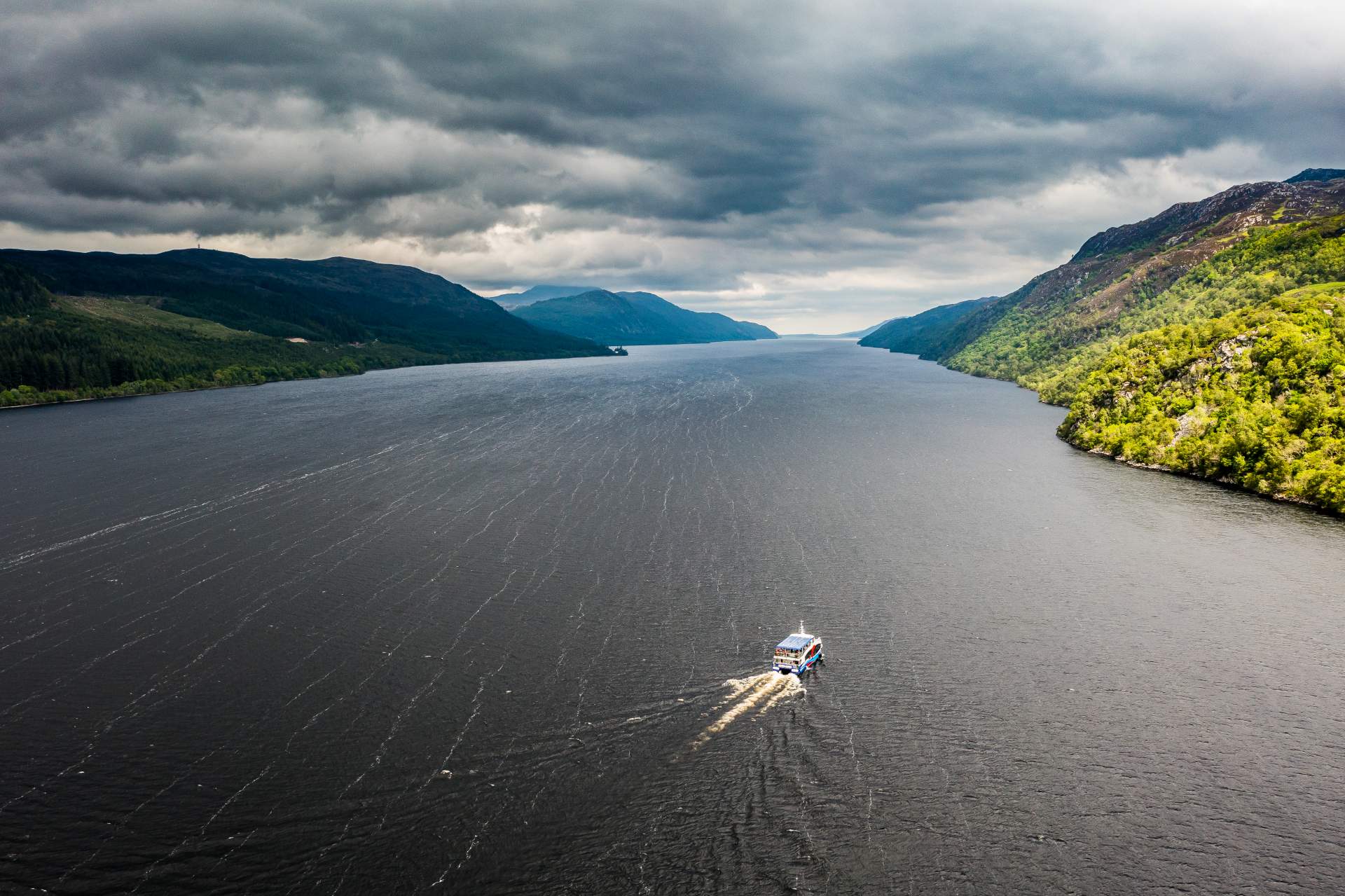Loch Ness and the Loch Ness monster
The Loch Ness Monster, or Nessie, as we like to call her, is one of the world’s greatest unanswered questions – but with over 1100 recorded sightings of the Loch Ness Monster, there’s no question that people are seeing something…
So, just how much do we really know about Nessie and her extraordinary Loch Ness home? Well, whether you’re planning an unforgettable monster-spotting trip and excited to discover all that Loch Ness offers, or just brushing up on your monster facts, you’re in the right place!
Let’s get started!
A monster playground
Before we delve deeper into tales of sightings and theories, let’s look at Nessie’s epic playground – Loch Ness. Just how might a monster manage to hide in these waters?
One of the best ways to experience Loch Ness is from the water because, quite simply, this loch is on a scale you’ve never seen before. Here, monster, myth and legend meet vast, wild and beautiful landscapes. Picture dark waters, ancient forests and cloud-kissed mountains under soaring skies and fiery sunsets, the majestic ruins of Urquhart Castle standing guard.
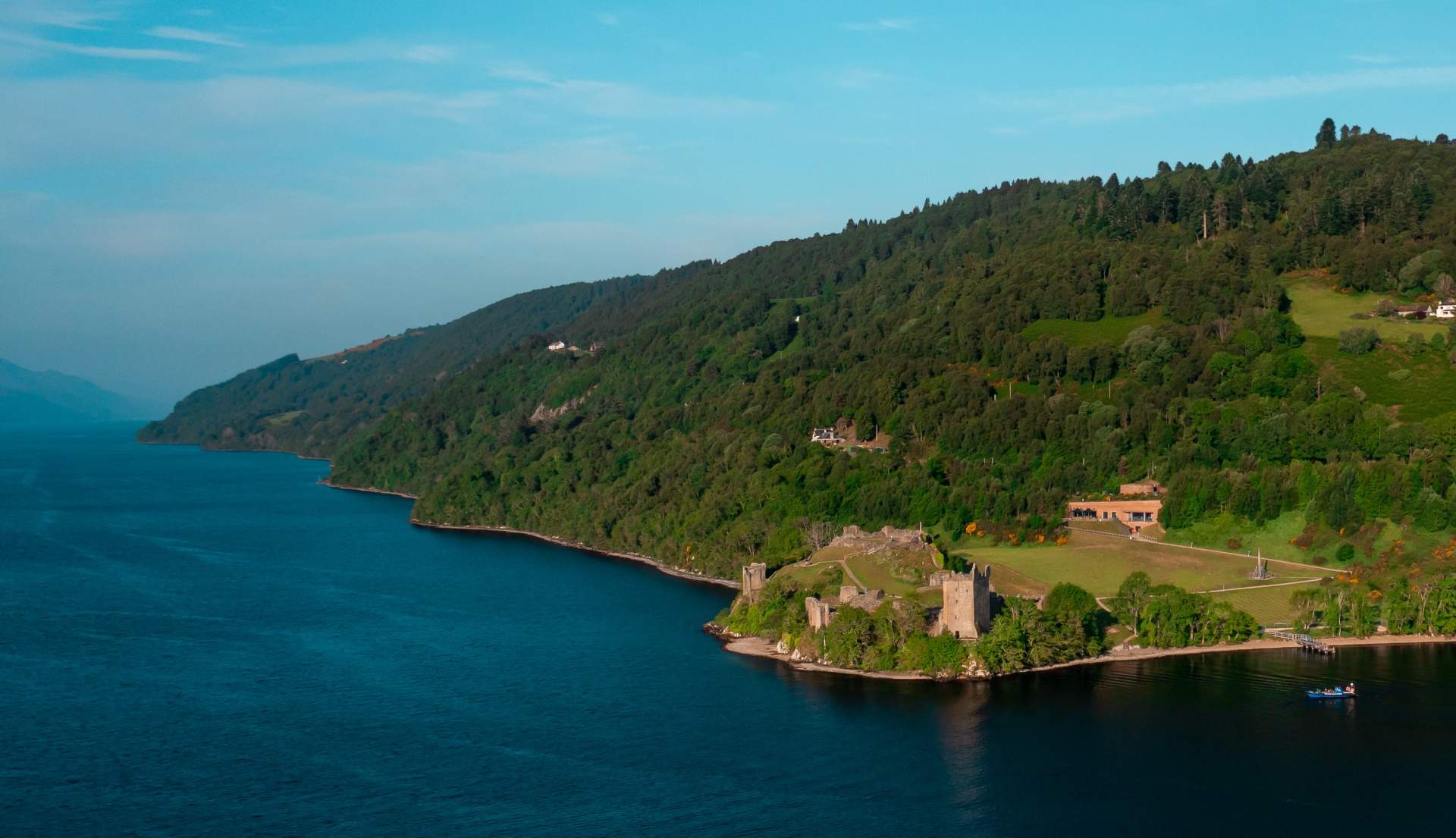
Legend tells us that Loch Ness was created in anger by the Celtic Winter Queen, the goddess Dark Beira, or Cailleach Bheur. When her maid Nessa was late to attend to her duties, Beira raged and transformed Nessa into a river – the river Ness. Nessa eventually managed to escape the confines of the river, stretching to become the deep waters of Loch Ness.
The perfect location for a mystery then, and for an unforgettable adventure. Whatever you discover here, one thing is for certain – Loch Ness is a place like no other.
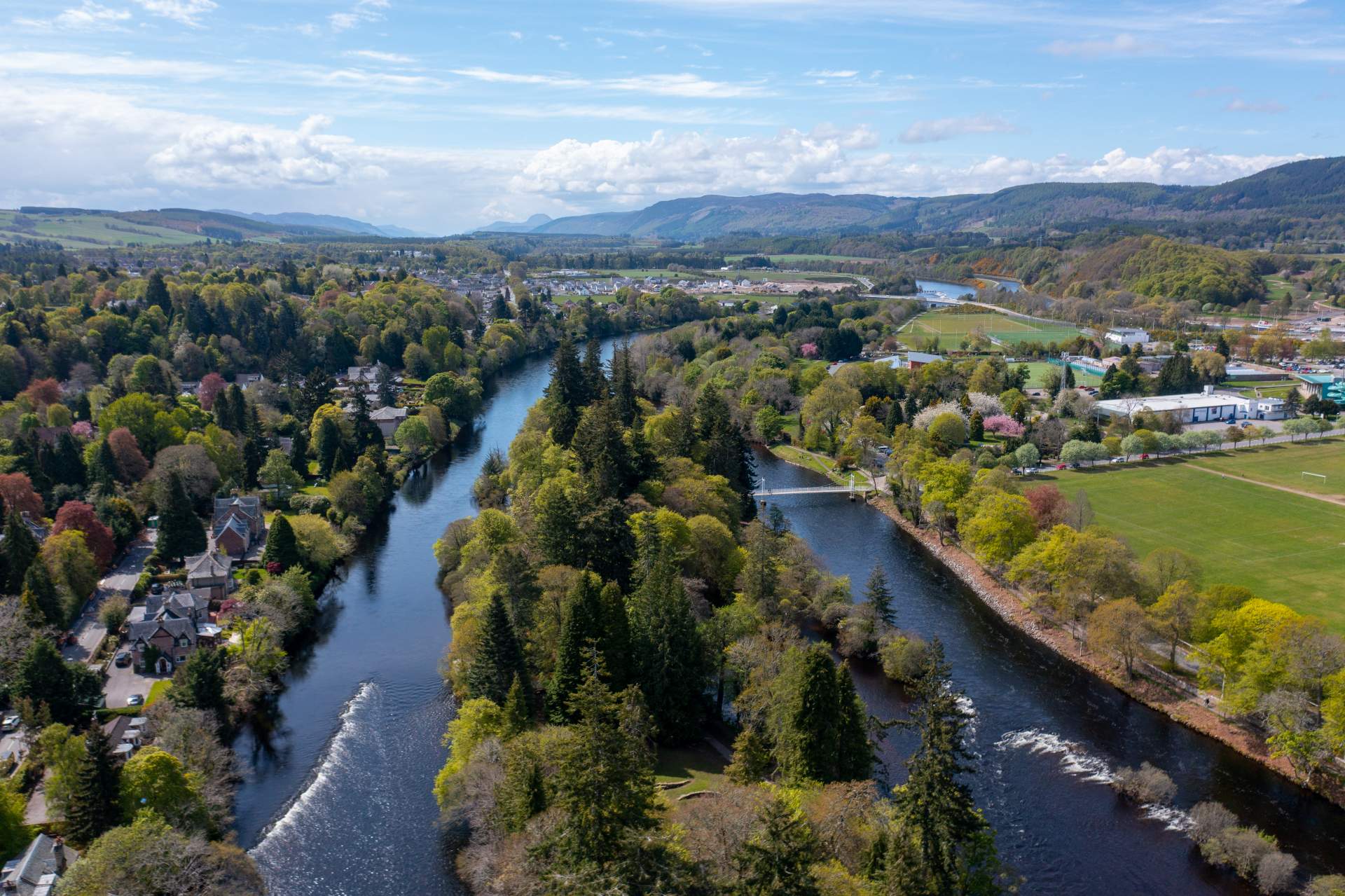
How Long?
Lying at the eastern end of The Great Glen, or An Gleann Mòr, Loch Ness stretches southwest for 23 miles (37km) from Inverness, on the east coast, right to the bustling village of Fort Augustus, halfway along the Great Glen. Walking along the water’s pebbly edge at Dores Beach, the distant shoreline vanishes in a blue blurring of water and sky.
How Deep?
The narrow, deep glen runs right across Scotland, east to west, following the line of the 380-million-year-old Great Glen Fault and was carved out by glaciers during the last ice age. This trench-like landscape means Loch Ness is deep - reaching incredible depths of 230m (754ft) at its deepest point, just north of Urquhart Bay. Here, Edinburgh Castle or London’s Millennium Wheel could be submerged almost twice!
Fun Fact!
These immense depths and remarkable length mean that Loch Ness holds the largest volume of fresh water in the UK. In fact, the loch holds more water than all the lakes in England and Wales combined! What’s more, there’s enough water here to submerge every human being on the planet – not just once, but more than three times over!
Plenty space then, to hide a mystery or monster…
You have to experience it!
With this unique, iconic landscape, it’s no surprise to us that Loch Ness was named as Scotland’s most ‘Instagrammable’ loch. We could use a dictionary’s worth of adjectives to describe just how it feels to stand on the shores of a loch deeper than the North Sea, but to be honest? You need to experience it for yourself – there’s nothing like it!
Is Nessie really hiding in Loch Ness?
Early sightings
There is a huge collection of human testimony offering eye-witness accounts of sightings in Loch Ness. The earliest written record is from 565AD when St. Columba is said to have driven a beast back into the water. Infrequent sightings followed, with 21 recorded between the 1500s and 1800s. These earliest sightings were recorded by people local to Loch Ness, at a time when mythology and superstition played a greater role in people’s lives. So, could some of these historical Loch Ness Monster sightings perhaps be based in local folklore?
The tale of the Loch Ness Kelpie
Scotland’s lochs and rivers are said to be home to kelpies and water-horses, or each-uisge. Stories of these beasts describe beautiful creatures who could shape-shift, taking human or animal form. Despite their beauty, they were deadly, luring men and women into the watery deep.
One local tale from the early 1800s tells of a kelpie who haunted the shores and woods of Loch Ness. A dashing stallion on land, the kelpie wore a fine saddle and bridle. When local man James MacGrigor came across the kelpie, he resisted trying to claim the horse for his own – he knew well the tales of the each-uisge. Instead, he took the kelpie by surprise, raising his great Claymore sword, cutting off the kelpie’s bridle.
The stricken kelpie pleaded and roared for his bridle, the source of his life and powers, but MacGrigor raced to the safety of his home, outwitting the kelpie to keep the magical bridle. Thanks to MacGrigor’s cunning, no one went missing from the shores of Loch Ness again.
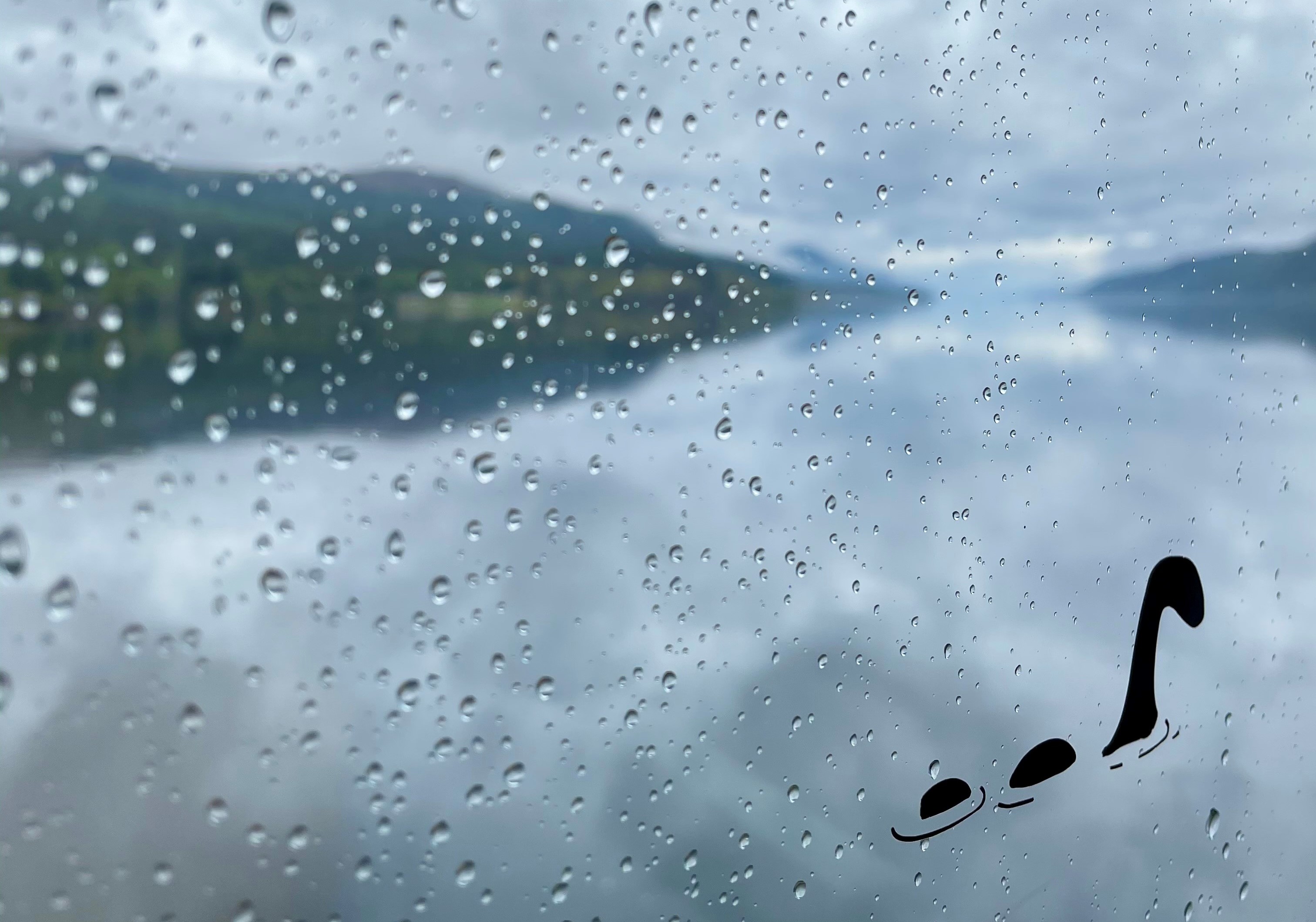
The Official Loch Ness Sightings
The number of recorded monster sightings increased through the 1900s, at the same time as visitor numbers to the area began to grow. However, compelling sightings were recorded by local residents too – in 1916 the gamekeeper from a local estate reported a huge animal surfacing by his boat; then in 1933, the manager of the Drumnadrochit Hotel reported seeing a beast resembling a whale. Soon after, a couple driving along the south shore of Loch Ness saw an enormous animal, like a “dragon or prehistoric monster”, cross in front of their car. These 1933 sightings were reported in newspapers, bringing the legend of the Loch Ness Monster to the nation’s attention. Then, in 1934, Nessie became an international sensation when one of the most famous photographs of Nessie was taken, showing a small head and long neck appearing from the water. This reinforced the idea of a prehistoric animal, such as a plesiosaur, living in the loch. However – spoiler alert! - in 1994 the photograph was revealed as a hoax. It wasn’t the first hoax, and sadly wouldn’t be the last.

Now however, over 1160 sightings have been recorded to date in the official sightings register.
Yes indeed, such a register exists! The current 1163 (as of October 2025) sightings are all recorded on the Official Loch Ness Monster Sightings Register, created and kept by the voluntary registrar team.
A local man, Gary Campbell's interest in the monster began in 1996, when he saw something in the north end of Loch Ness. Despite only observing it for a few seconds, Gary remembers seeing a black, shiny hump that came out of the water twice. When he realised there was nowhere to record his sighting, he and his wife decided to start the official register.
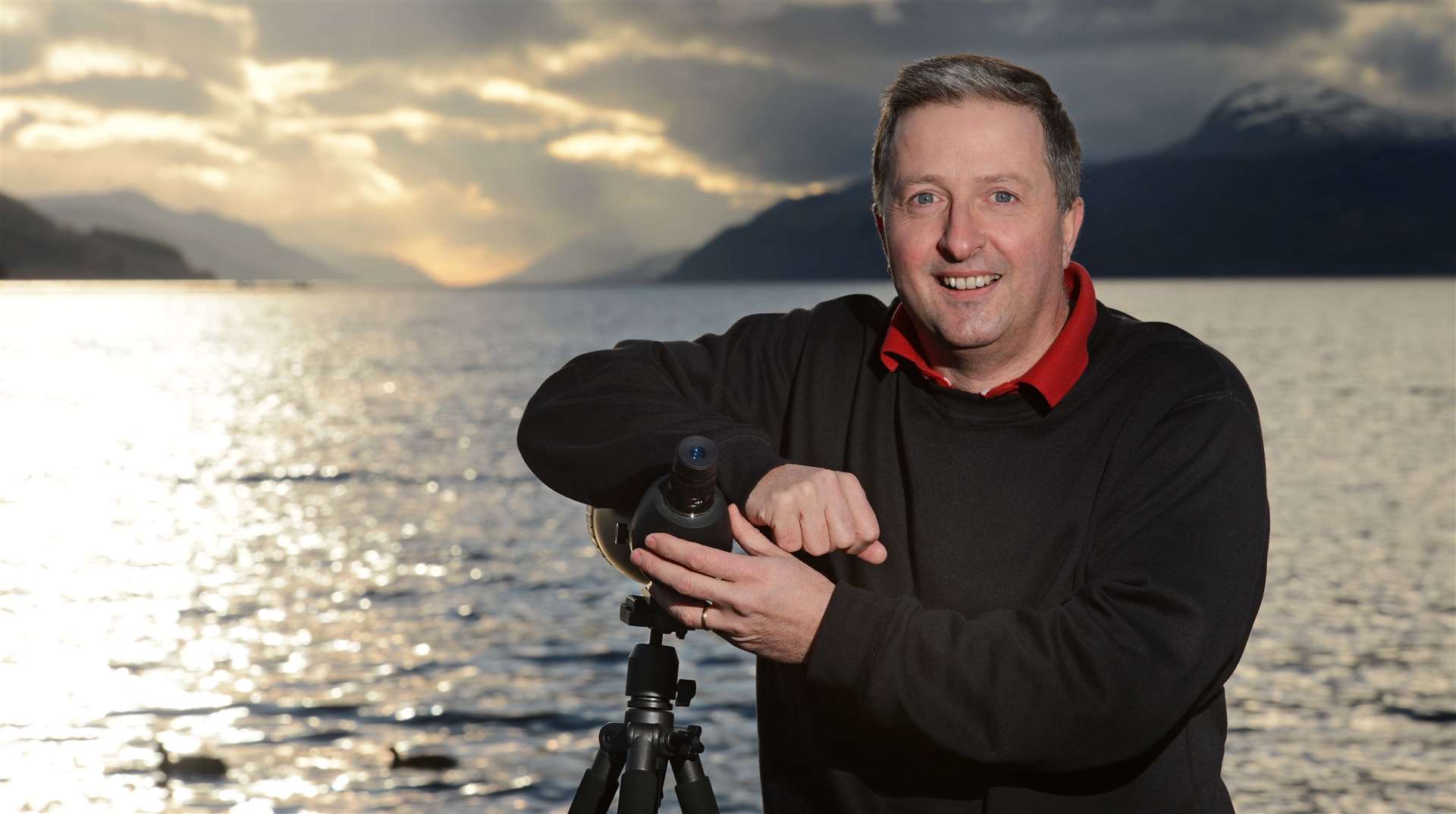
Watch Loch Ness Live — Wherever You Are
Can’t make it to the Highlands just yet? Our Loch Ness live webcams bring the magic of Scotland’s most famous loch straight to you... in real time.
Take in sweeping views of Loch Ness, the surrounding Highlands, and the ever-changing Scottish skies. Whether you’re Nessie-spotting, planning your next adventure, or simply craving a moment of calm, our webcams let you experience Loch Ness from anywhere in the world.
Tune in day or night to see what’s happening on the water, watch the weather roll across the glen, or catch a glimpse of local wildlife along the shoreline.
Discover the beauty of Loch Ness — live, unfiltered, and unforgettable.
What does Nessie look like?
Chances are, when you think of Nessie you think of a large, long-necked serpentine water-beast with one or more humps rising from the water. However, finding an accurate description of what the Loch Ness Monster looks like is harder than you might think! Reports vary greatly in description, size, and activity on the water. In addition, the waters of Loch Ness are very dark in colour, due to a high peat content – underwater visibility is severely reduced near the surface, and there is no visibility at all from 9m and below. While the multi-humped sea serpent-like creature has most often been described, other sightings describe a black, scaly dot in the water; a whale-like object; something with an elephant-like head; a long-necked beast; and something like an upturned boat. The description of a prehistoric animal from 1933 suggested at a survivor of the plesiosaurs, the flippered marine reptiles that co-existed with dinosaurs. A further prehistoric connection came with the discovery of a Pterichthyoides Milleri fossil near Loch Ness. This small, ancient, armoured fish lived in freshwater lakes and used flippers to move around. The fossil, nicknamed ‘Pessie’ or ‘Prehistoric Nessie’, is now on display in Inverness Museum and Art Gallery. Who knows how Pessie could have evolved over time?
And what does the science say?
By the 1960s, the consistent sightings in Loch Ness caught the interest of the scientific community. While the more sensational suggestions such as that of a plesiosaur living in the loch were generally discounted, scientists were willing to consider that the vast depths could be home to something undiscovered.
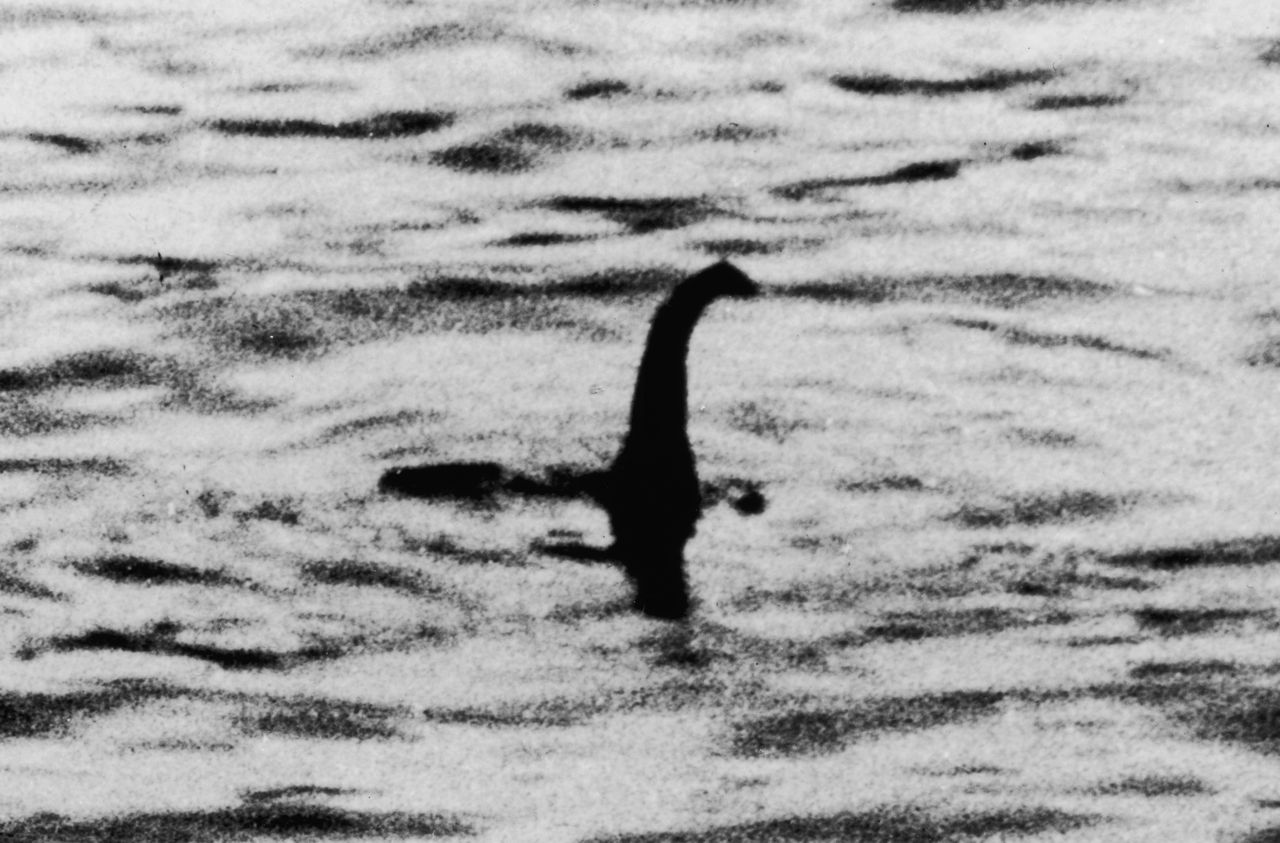
Sightings explained
The first expedition was from Oxford and Cambridge universities in 1960. They quickly established that the multi-humped sea serpent sightings, which had increased from the 1800s, were in fact undulating boat wakes. This corresponded with an increase in boat traffic on the loch following the opening of the Caledonian Canal in 1822.
In 1962 the Loch Ness Phenomenon Investigation Bureau began surface surveillance of the loch, quickly establishing a connection between calm weather and Nessie sightings. Furthermore, they revealed a range of illusions created on the loch. Only the top layer of water in the loch warms and cools with the seasons – the deeper water stays at a constant temperature of around 5.5°C year-round, making Loch Ness prone to mirages. These occur most often in calm weather, making objects look larger. Indeed, many long-necked monster sightings were shown to be long-necked water birds. Other sightings were attributed to misinterpretations of wind slicks, seals, deer swimming in the loch, floating logs, and birds flying past the camera. There has been a more recent addition to this list, too - wild swimmers! Despite these advances, sightings continued unabated – mounting evidence for something unusual living in Loch Ness.

Underwater investigation
In 1981, the Loch Ness Project, led by naturalist and Loch Ness expert Adrian Shine, built their own sonar search vessel. They used this to run systematic, continuous patrols along the length of the loch, resulting in 40 significant sonar contacts! While some could be explained – for example, by methane gas bubbles released from decaying vegetation, or seals entering the loch via the river – some remained unexplained.
The Loch Ness Project team launched Operation Deepscan in 1987 – a fleet of 20 boats using sonar as they slowly moved along the loch in a line. Again, strong sonar echoes were reported – and could not all be definitively explained.
One naturally-occurring phenomenon within the loch that was recorded were huge underwater waves, called internal seiches. These are driven by surface winds pushing the warmer upper layer of water in the loch out of place. When the warmer water swings back this creates waves in the top of the denser, colder layer of water below.
These internal seiches are common in Loch Ness – and have been seen to move floating objects, such as logs, through the water in the opposite direction to the prevailing wind. Something to remember when you’re watching closely for the monster!
A Loch Ness DNA survey
The most recent large-scale study of the loch and its possible inhabitants was carried out in 2018 by the University of the Highlands and Islands and the University of Otago, New Zealand.The researchers collected water samples from different parts of Loch Ness and studied these for environmental DNA – for those of us who aren’t scientists, this means DNA collected from an organism’s environment, rather than from the organism itself. The study aimed to identify all the living things in the loch. While no evidence was found of a prehistoric plesiosaur or other such large animal, the study did find a lot of eel DNA. So, could the Loch Ness Monster perhaps be a monster eel? It is reported, however, that around 25% of the DNA samples remain unidentified…
What do the experts now believe?
The Loch Ness Project
Naturalist Adrian Shine of The Loch Ness Project has been studying Loch Ness for more than 50 years. He reiterates the power of illusion and misconception on the water, and the results of decades of research to understand the loch’s habitats. He explains: “Loch Ness may be the most famous loch in the world but that doesn’t mean that it is understood. To understand it, and to make sense of the mystery, you must do more than just look at the loch – you must discover what you can’t see by looking at the surface.” Adrian welcomed the results of the recent environmental DNA study, with the new evidence contributing to the bank of scientific knowledge about Loch Ness. He believes that researchers are now left with three possible Loch Ness Monster theories, all of which are large fish: sturgeon, European catfish, and the giant eunuch eel. In considering each of these possibilities, Adrian noted: “While the sturgeon evaded the DNA study, we should keep in mind that this is a migratory fish, not usually found in our freshwater lochs – it is possible that there are rare occurrences when a large sturgeon has entered the loch in search of a mate, before returning to sea. The European, or Wels, catfish is not native to the UK, although some were introduced here in the 1900s. It’s possible one or two have made their way into Loch Ness – and these fish can live for a long time. However, they wouldn’t breed in Loch Ness due to the cold water temperatures. “Eels are known to be in Loch Ness, and this corresponds with the volume of eel DNA found in the survey. A eunuch eel which doesn’t return to breed at sea might stay in the loch and grow unusually large – however the DNA study would return the same results whether there were lots of smaller eels, or a few large eels. Adrian concludes: “And so, the mystery, the fun, remains. There will be a Loch Ness Monster as long as people want there to be.”
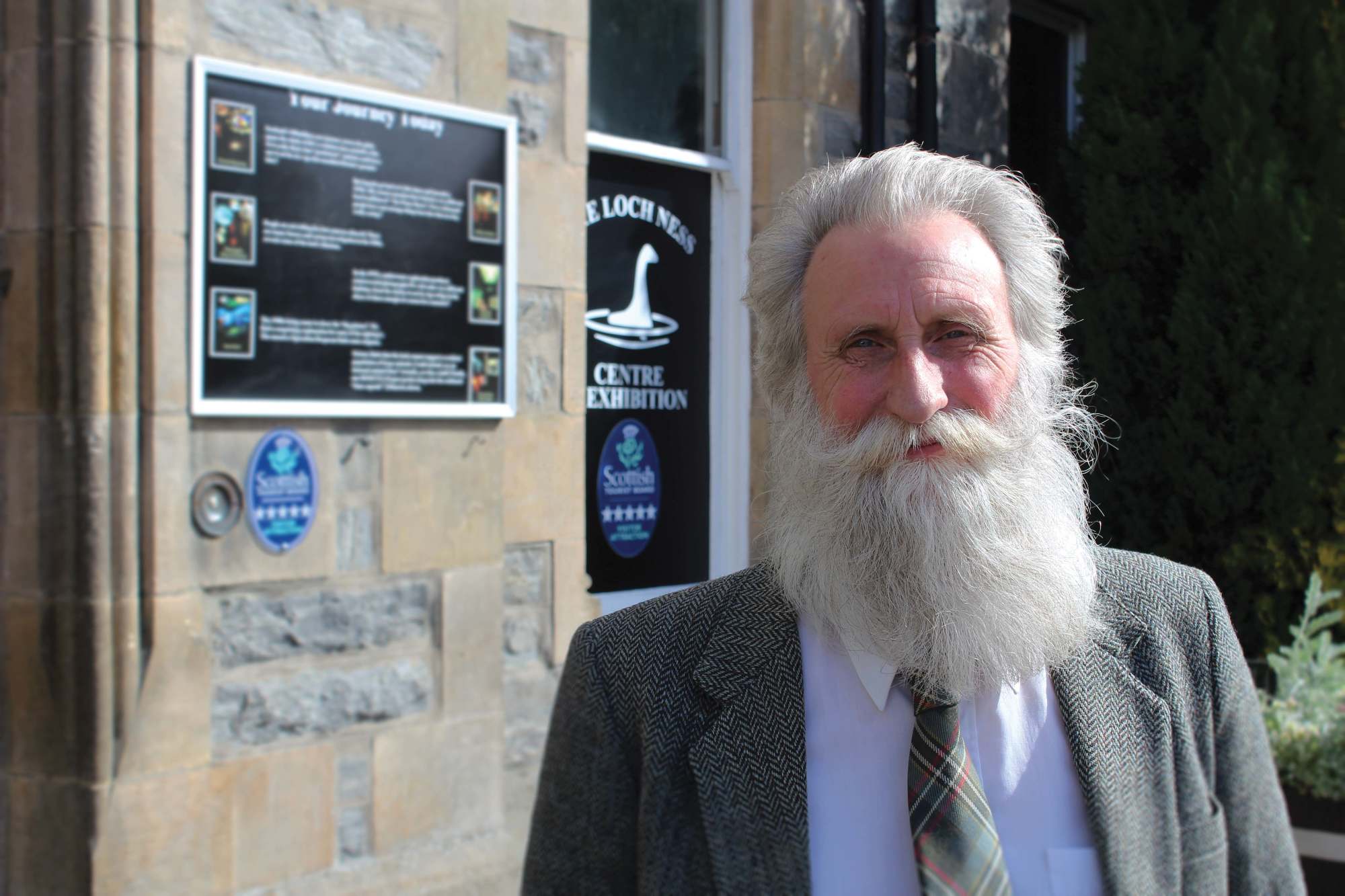
The Monster Hunter
Another man who has devoted much of his life to the search for Nessie is Steve Feltham, known as the Monster Hunter. After a family holiday to Loch Ness in 1970, when he was seven, Steve became fascinated by the mystery. In 1991 Steve became a full-time monster hunter, living in a former mobile library van. First touring the loch-side, and now based at Dores Beach, Steve has set a world record for the longest vigil of looking for the monster. Steve says: “When I first came, I was looking for something like a plesiosaur, like the rest of the general public – but over the last 25 years I’ve found that that wasn’t likely. My best guess now? The jury is out, but I’d suggest a Wels catfish, but we really don’t know. “The best evidence I’ve seen are the sonar contacts made by the Cruise Loch Ness boat, which has made several large contacts near the very bottom of the loch near Invermoriston – including one the size of a Transit van. There is definitely something big at that end of the loch.”

The Loch Ness Mystery remains
In today’s world of advanced technology, it’s truly astonishing that there is still no conclusive evidence to solve the mystery of the Loch Ness Monster.
It is true though, that many sightings can now be explained. The wealth of scientific study has also resulted in a valuable understanding of Loch Ness, the processes that occur within it, and the types of creatures that can survive in its cold, dark, depths. However, given the loch’s vast volume and the practical difficulties in surveying it all at once, it seems entirely possible that it is home to something not yet discovered. Remember the reported unidentified DNA? And how about those unidentified sonar echoes, right down in the depths of the loch, 5m or 6m in length, the size of a Transit van…
Nessie has become a legend, as epic in her own right as the vast, spectacular loch she calls home. Now, it’s over to you – will you come and experience Loch Ness for yourself? And will you be one of the lucky few to report a sighting?
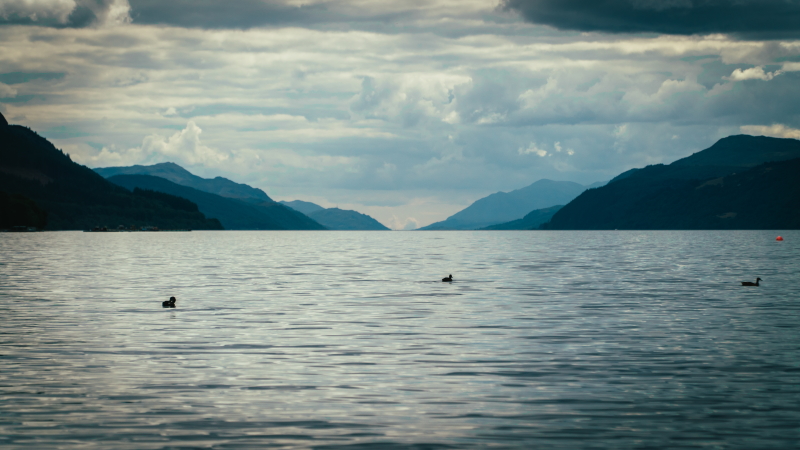
Our top Loch Ness recommendations
Whether you’re on a quest to spot to the Loch Ness Monster or looking to soak up the atmosphere of this iconic place, we’ve got you covered. A visit to Loch Ness offers everything from romantic, luxury retreats to adrenaline-fuelled watersports; world-class biking and hiking routes to our finest Highland hospitality, served up with spectacular views. Or perhaps you’ll explore the ancient places or catch sight of our unique wildlife? And no, we don’t just mean Nessie!
The Loch Ness Centre
One of the best starting points for any visitor to Loch Ness is the Loch Ness Centre, in Drumnadrochit. Here you’ll find actual research craft, including the uniquely-designed sonar patrol boat and submarine observation chamber, along with interactive displays including lasers and special effects. The exhibition’s themed areas take you through 500 million years of history, natural mystery and legend, with the mystery always centre stage.

Urquhart Castle
Perched on a headland looking over Urquhart Bay, the regal ruins of Urquhart Castle with its modern visitor centre allow you to journey back in time, through a thousand years of history. Stories of clans, feuds and war are all here. Be sure to climb Grant Tower for an excellent Nessie-spotting panoramic view over Loch Ness!
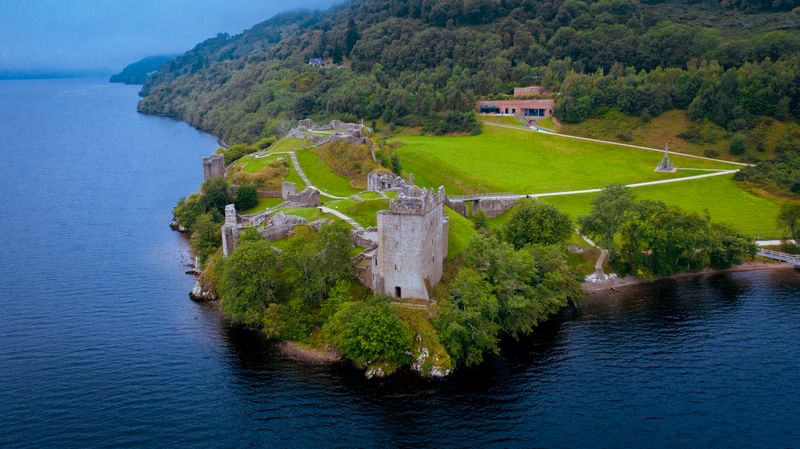
Loch Ness from the water
Being out on the waters of Loch Ness lets you explore from a whole new perspective! Join one of the fantastic variety of cruises with engaging commentary and spectacular views, with the loch’s history at your feet.
Loch Ness Cruises - April to October
Loch Ness Hub Castle Cruise - April to October
Cruise with the Loch Ness Centre - Summer only
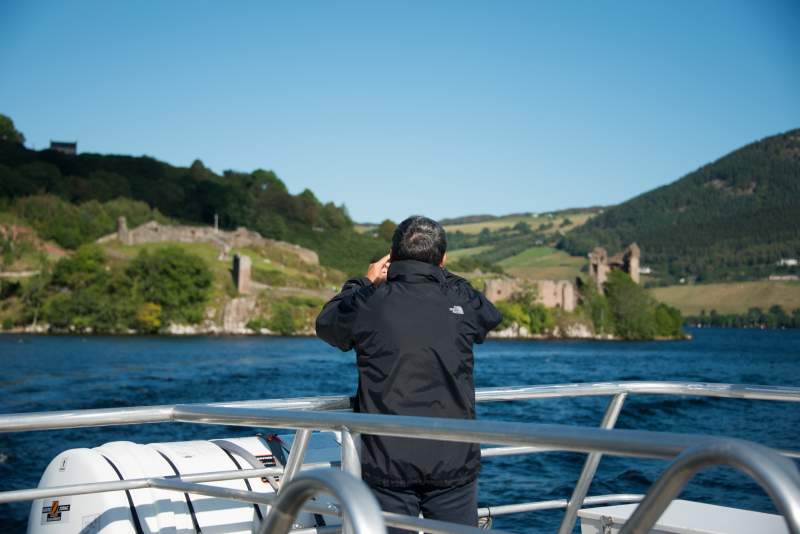
Paddle Adventures
To get even closer to the water, experience a paddle adventure of a lifetime with a canoe or kayak trip. Check out In Your Element for fun trips with local, knowledgeable guides.
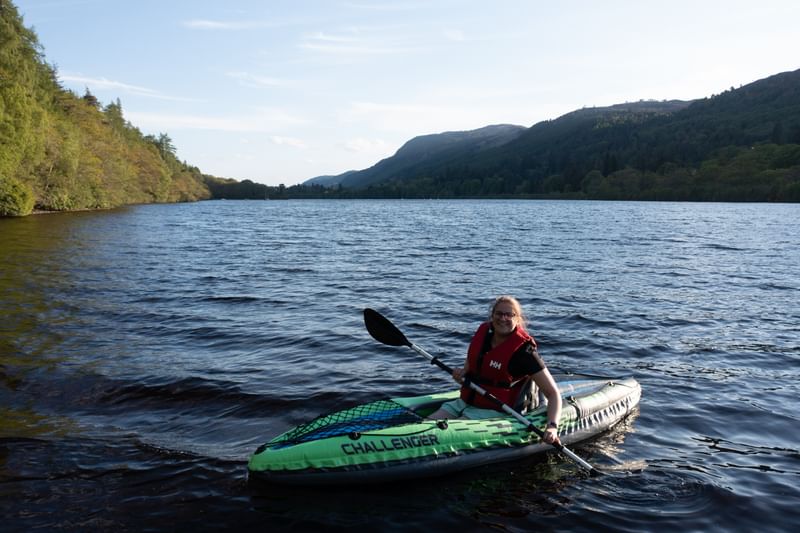
Dores Beach and the south side of Loch Ness
Many locals agree that Dores Beach offers the best view of Loch Ness – this too, is where you’ll find Monster Hunter Steve Feltham’s permanent base. Take a walk along the pebble beach, keeping one eye on the water, then follow the circular walk along the shoreline to Torr Point and Aldourie before returning to Dores village.
Travel on the south side of Loch Ness is at a slower pace, the roads less travelled. Take a day to enjoy the journey, with plenty opportunities to stop and get right down to the loch’s edge. South from Dores you’ll find the Change House Viewpoint, and the spectacular Falls of Foyers – follow the beautiful woodland trails uphill to the waterfall, and downhill to Loch Ness.
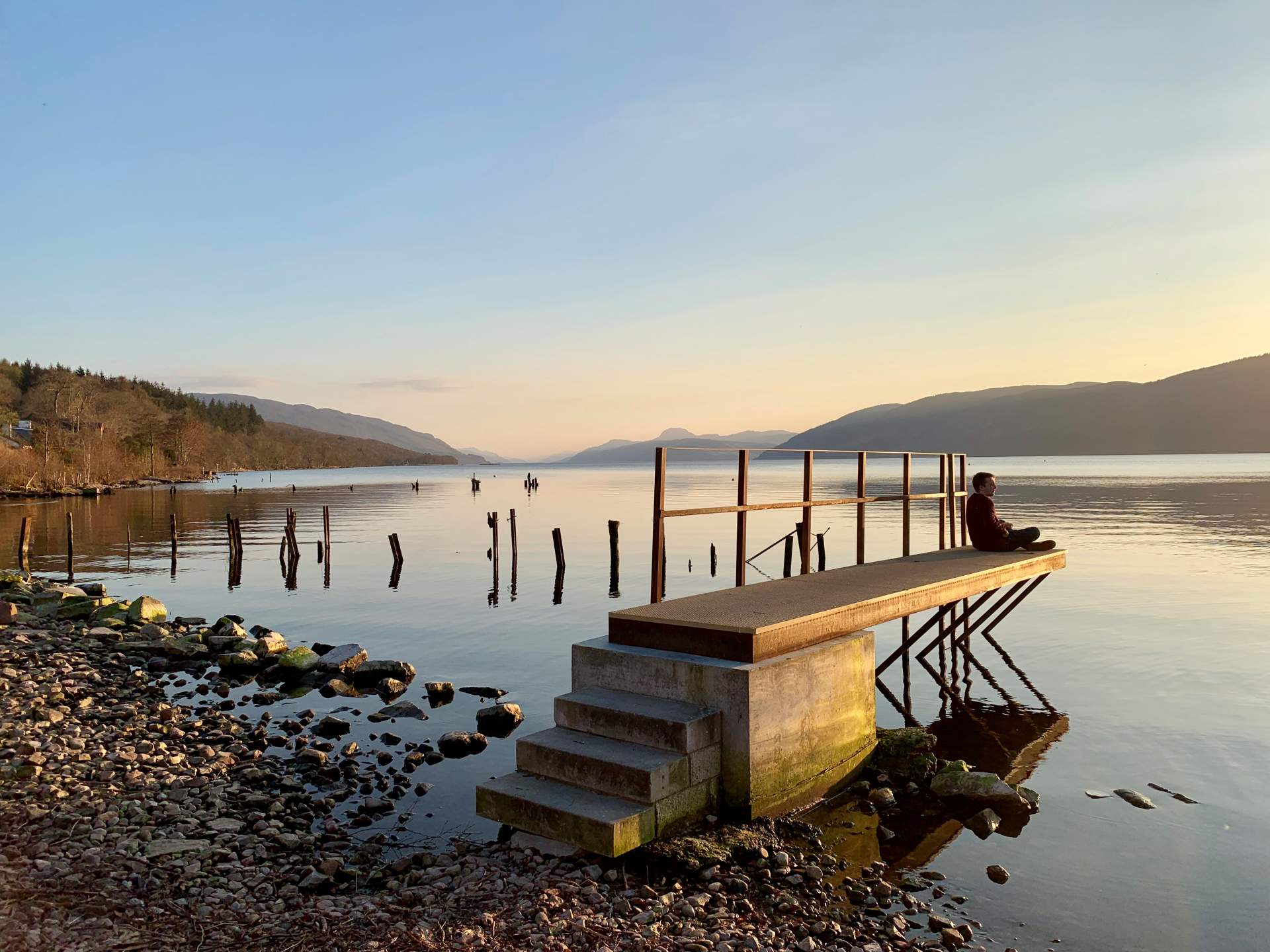
Excited for more?
Get ready to discover your own Loch Ness stories with our handy planning tools!
Find inspiration in our jam-packed blogs, check out our interactive map of things to do, and find all the travel information you need, and search for the perfect place to stay.
Your monster adventure is waiting – are you ready to experience the mysteries of Loch Ness for yourself?

